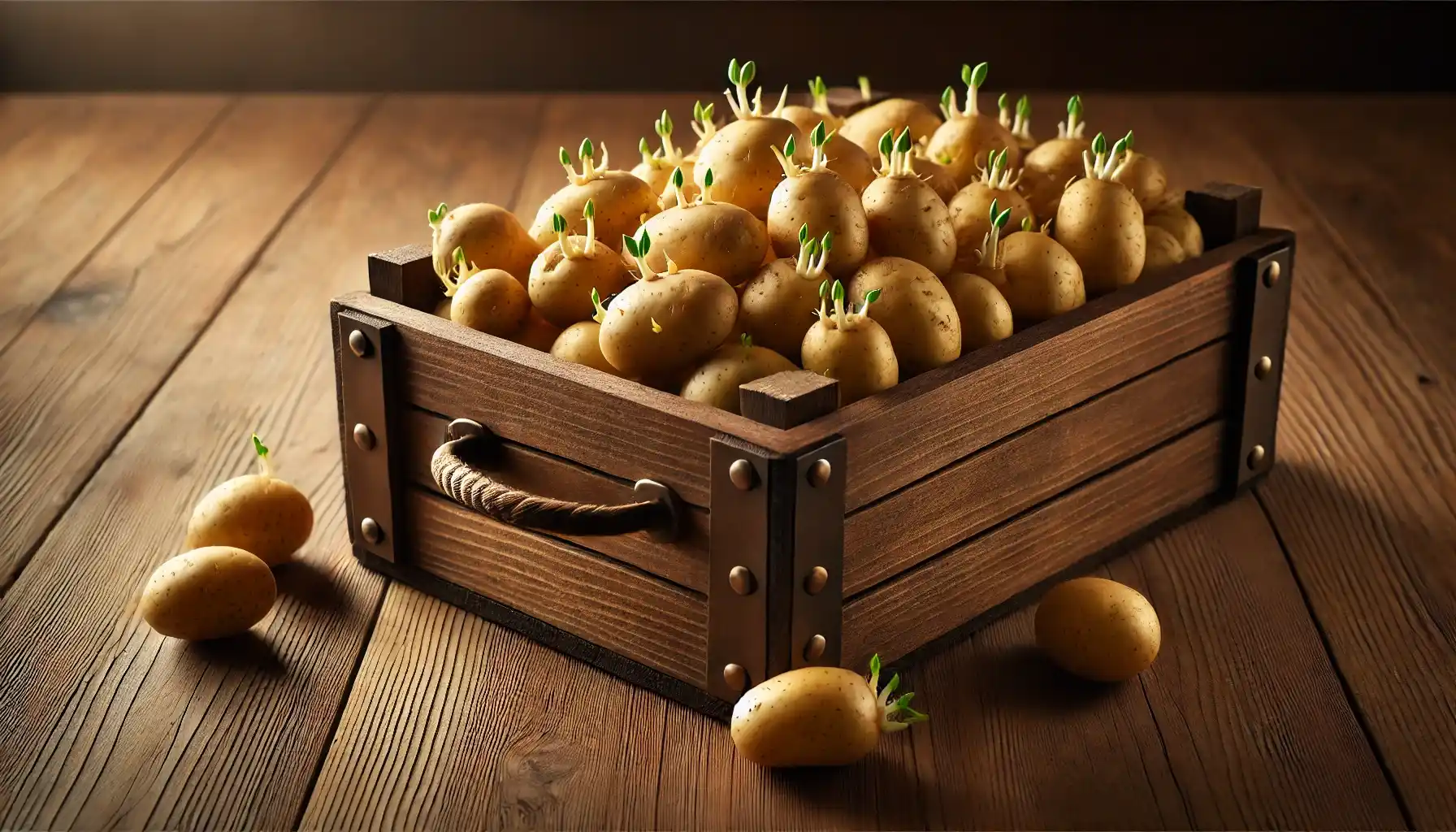
Discover the art of potato planting. Learn what sprouts mean and how to prepare soil for planting. Plus, harness the power of the industry with the AI Plant Finder tool for personalized gardening guidance. Grow your best potatoes ever with expert advice.
Contents:
Planting potatoes is one of the most popular practices in the sphere of vegetable gardening, and the easiest way to get a rich harvest in the end is to plant sprout potatoes first. But what do potato sprouts look like? Should we prepare tubers to plant them properly?
Explore why planting sprout potatoes is beneficial, what sprouts look like in general, and which steps to take to grow potatoes successfully. As a bonus, discover a useful tool that makes your gardening experience less complicated.

What Are Potato Sprouts?
When a potato is put in a warm, well-lit, and relatively moist environment with adequate air circulation, it may eventually develop eyes, tentacles, and bumps. Although most people witness sprouting unintentionally when a bag of potatoes is forgotten for a long time, some gardeners try to trigger and accelerate this process on purpose.
These sprouts gradually elongate and darken in color as they grow, and develop into the stems and foliage of a potato plant in the end. Nevertheless, some people wonder, “What do potato plants look like when they sprout?”
What Do Potatoes Look Like When They Sprout?
In general, potato sprouts are seen as an indicator of the growth beginning, this is why it is essential to understand what potato plants do look like when they first sprout and when it is time to plant them.
The first stage of sprouting is always accompanied by the development of small eyes. They usually predefine the spots where new growth emerges and sprouts are going to develop from. As a rule, the sprouts themselves start as tiny, pale green bumps that gradually elongate and turn into strong root-like formations.
What is also important to do is monitor the potatoes as they sprout so as to avoid rot and other types of plant damage. Since it usually takes 4 to 6 weeks for potatoes to sprout and get ready for planting, stay consistent and cautious to get the best out of the process. Make sure you choose healthy tubers only and never forget about preparation.

What Is Needed to Plant Potatoes?
When it comes to planting potatoes, it is important to go through a proper preparation process so as to get a successful harvest. The first thing to gather is high-quality potatoes in the appropriate condition, i.e., potato sprouts should be strong, sturdy, and healthy-looking. Although there are potatoes specially grown for planting, already sprouting potatoes may be used, too.
Other things worth mentioning are appropriate soil and basic gardening tools, such as a garden fork, spade, hoe, trowel, and a soil thermometer used to prepare a planting site. Nevertheless, you never know what may also be needed during the session, so be ready to invest in additional tools, even digital ones.
How to Prepare the Planting Site and What to Do Next?
Preparing the planting site is a major contribution to getting a rich and healthy potato crop. So as to minimize the risks of diseases and pest infestation, as well as maximize yield production, make sure you take essential steps and prepare your soil properly.
Choose an Appropriate Location.
Find a sunny spot in your garden with well-drained soil. Make sure you follow the guidelines of crop rotation and do not plant potatoes where tomatoes or other heavy feeders have been grown recently.
Prepare the Soil.
Loosen the soil with the use of a gardening fork or spade and remove any obstacles, such as rocks and weeds, to create a clean planting bed for potatoes.
Make Necessary Amendments.
The next thing to do is assess the quality and pH level of the soil. In general, potatoes like acidic soil with a pH value of 5.5 to 6.5. If needed, add organic materials to lower pH levels (e.g., sulfur) or, vice versa, increase it (e.g., lime or wood ash). Besides, do not forget about natural fertilizers and other types of organic matter to improve soil structure and fertility as well.
Create Planting Rows.
So as to make room for potatoes to grow, create mound trenches or furrows and make sure they are straight and evenly spaced to facilitate successful plant development. Utilize a hoe or garden rake for better and more consistent results.

Cut the Sprouts.
Although some gardeners miss this step, it is essential to cut off the sprouts with an adequate portion of the potato remaining attached. Next, wait a bit for the skin to dry slightly and be ready to finally plant them.
Plant the Potato Sprouts.
Place your potatoes with the sprouts facing upward in the trenches and space them 10 to 12 inches (25 to 30 cm) apart. By the way, the most appropriate time to plant potatoes is the early spring, so do not miss the timing for a perfect growing season.
Water Potatoes.
As soon as you plant the potato sprouts, do not forget to thoroughly water the plants and provide them with enough moisture for further germination. When the soil feels dry to the touch, water potatoes again to promote healthy and consistent growth of your crop.
AI Plant Finder – A Garden Assistant to Rely On
Gardening is an activity that always uncovers new sides and poses new challenges. What does a potato sprout look like? How to plant sprouts appropriately? How not to miss the perfect timing? Thousands of questions may haunt plant lovers of all levels, but there exist tools that may help them on their agricultural paths. And applications like AI Plant Finder are amusing creations of the industry that may assist you right on the phone.
AI Plant Finder is an outstanding platform for plant enthusiasts, professional gardeners, and botanists, i.e., those who are somehow connected with gardening practices in general. This app offers a lot of features that may be helpful in yards, at home, and even outside the gardening facilities. These benefits include plant and disease identification via just one photo, a water calculator and light meter, a digital encyclopedia with more than 400,000 plant species, Plant Care alerts, and much more.

If you are interested in planting potatoes but not sure how to prepare sprouts and which potato varieties are the best options for your garden conditions, the AI Plant Finder app can provide you with relevant information about each species, including care tips and planting requirements. Keep track of your plant’s progression, explore the world of flora, and create your own in turn!